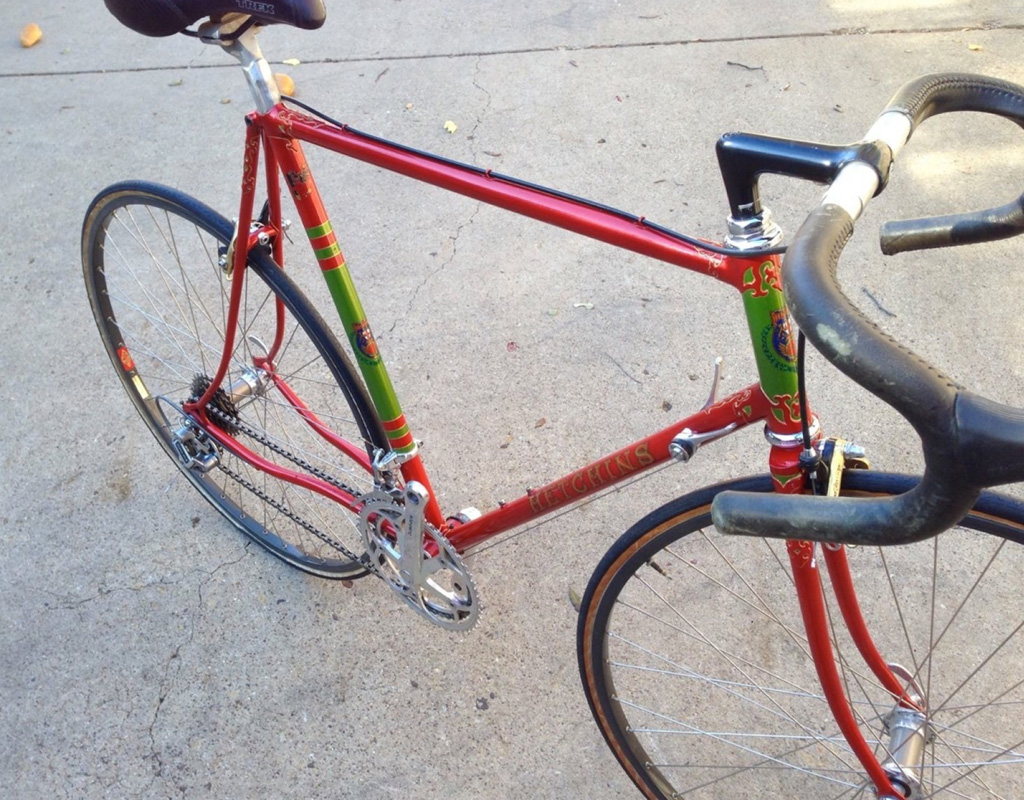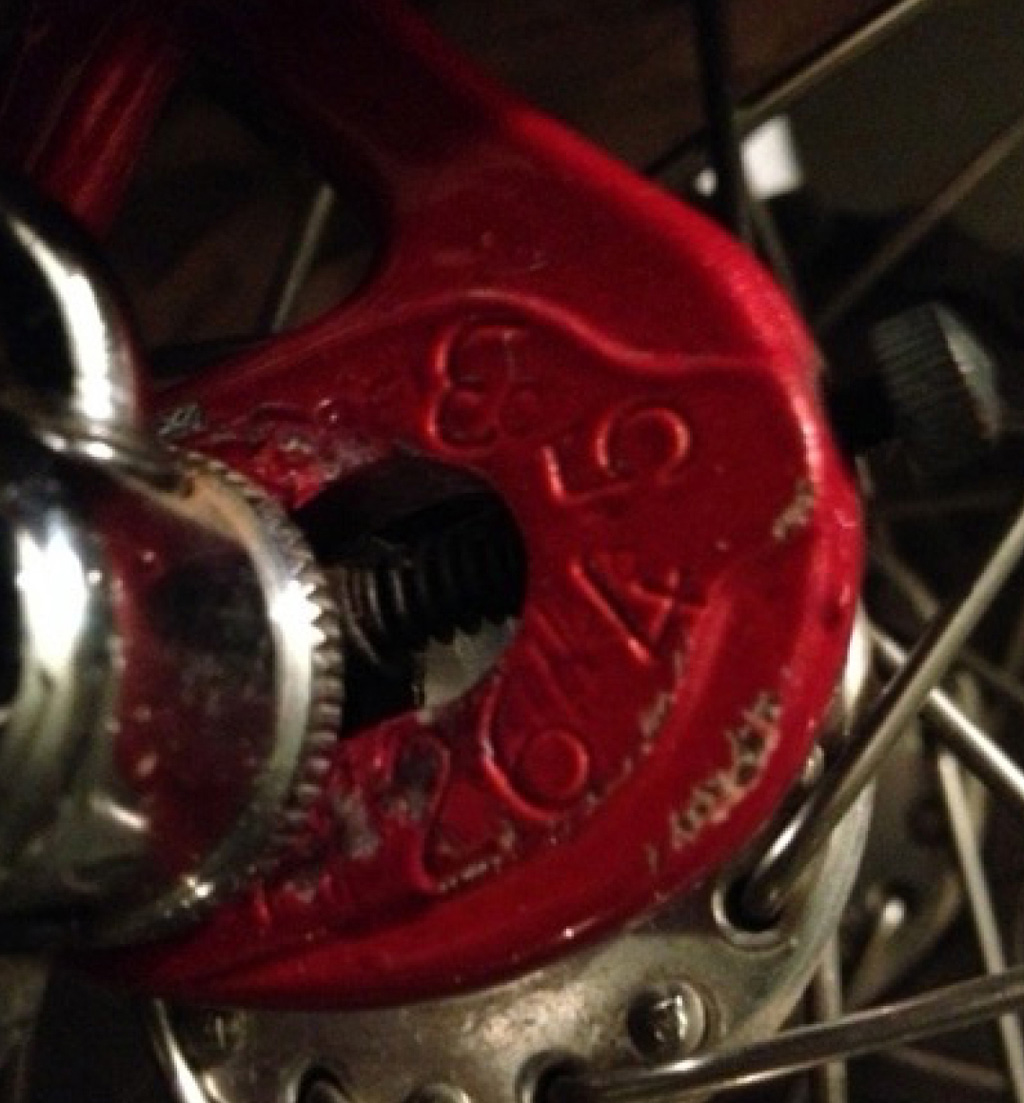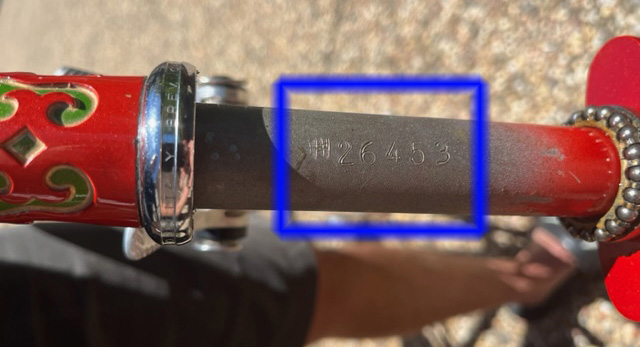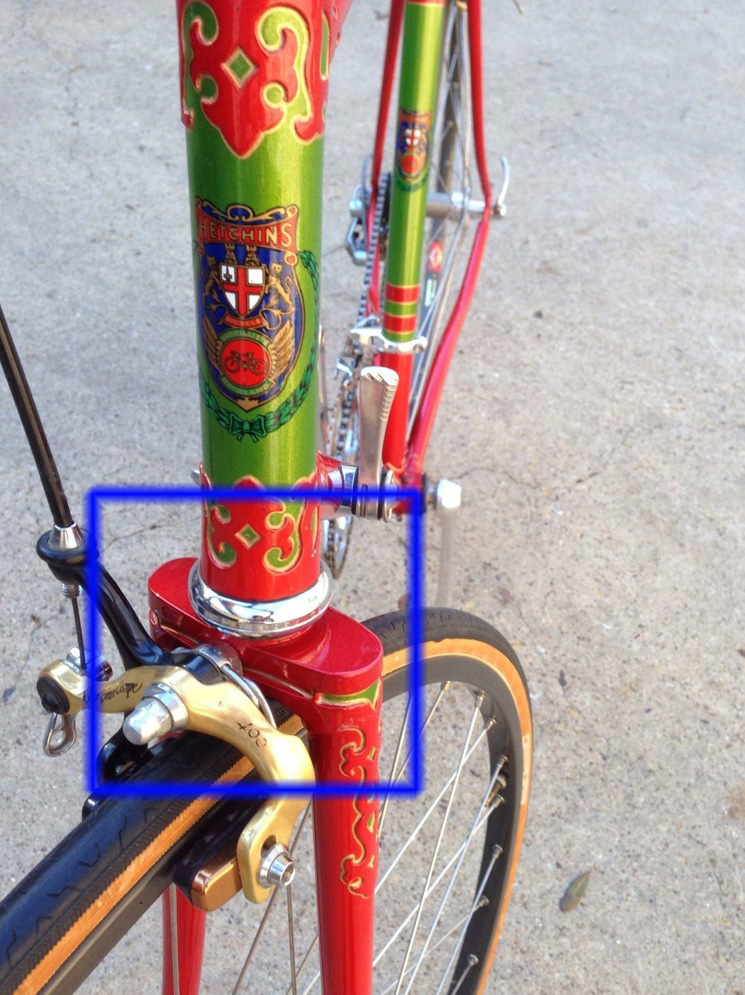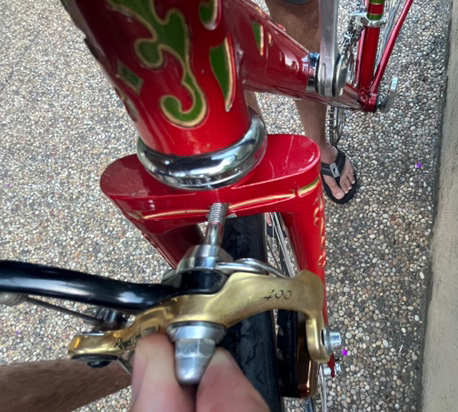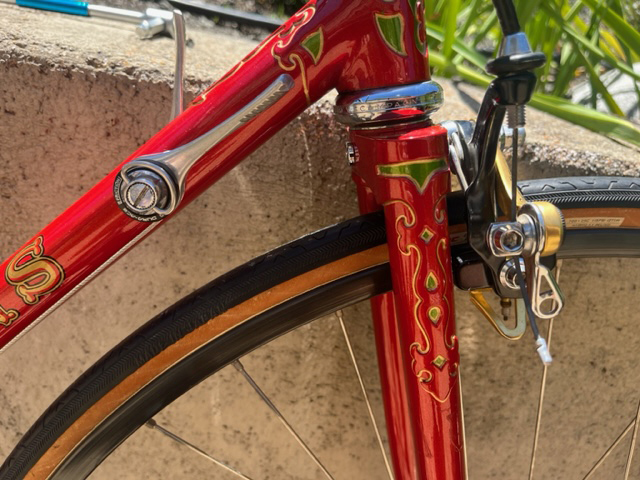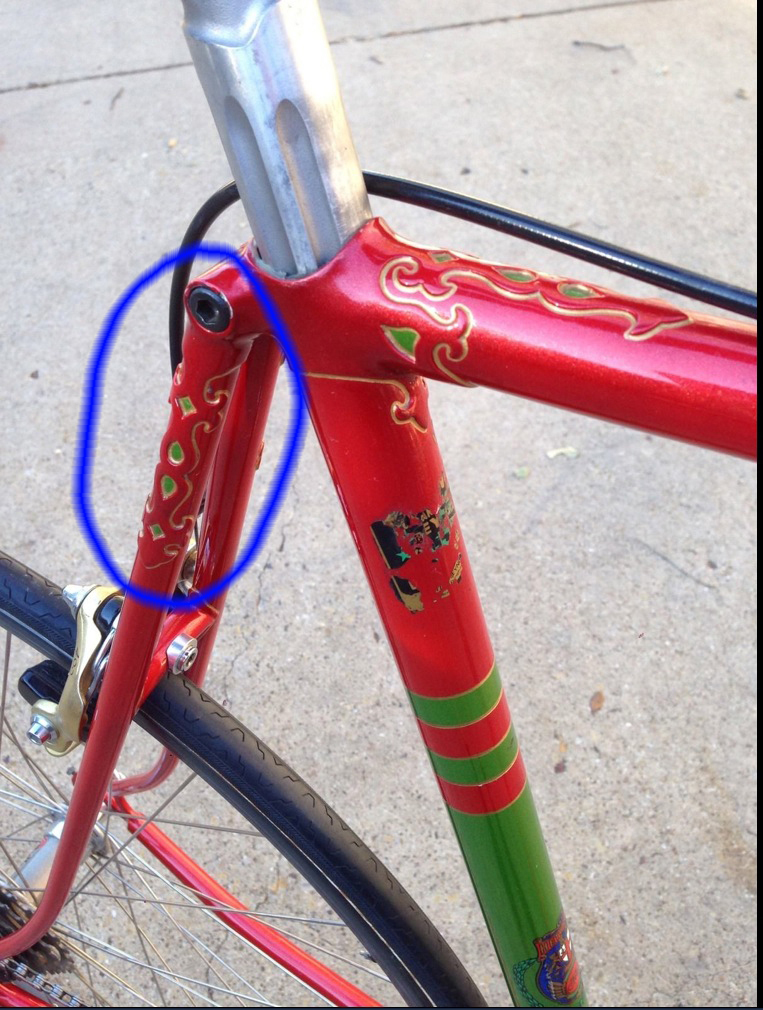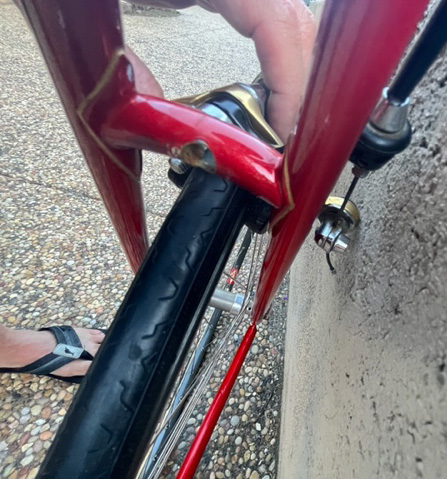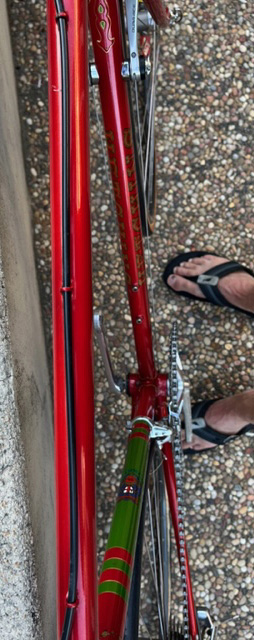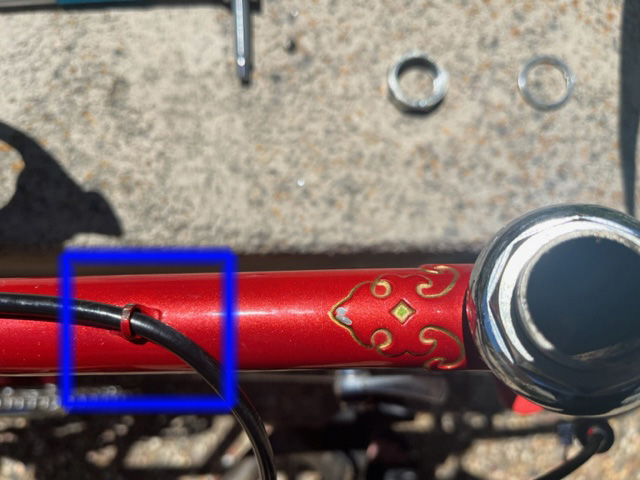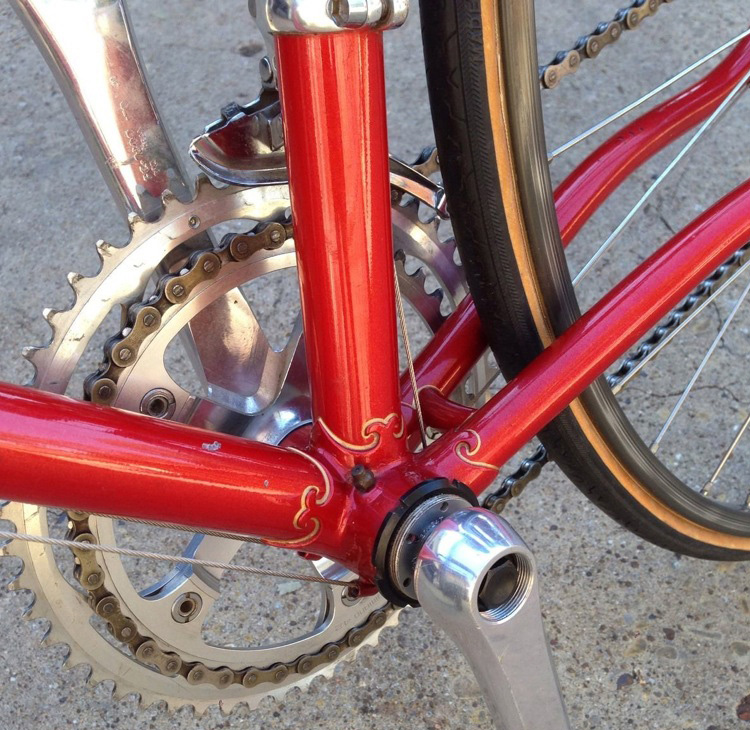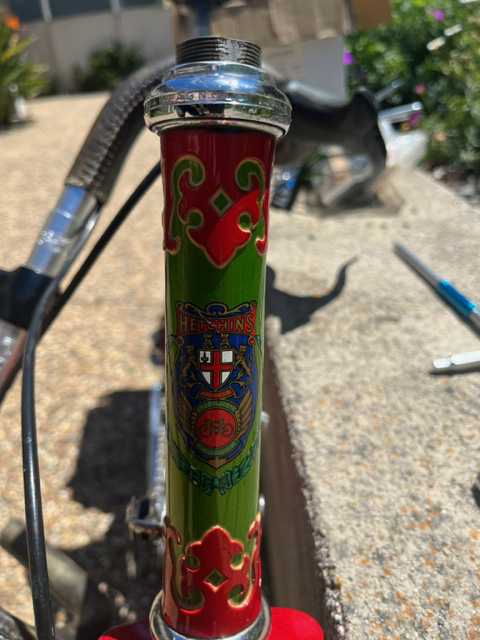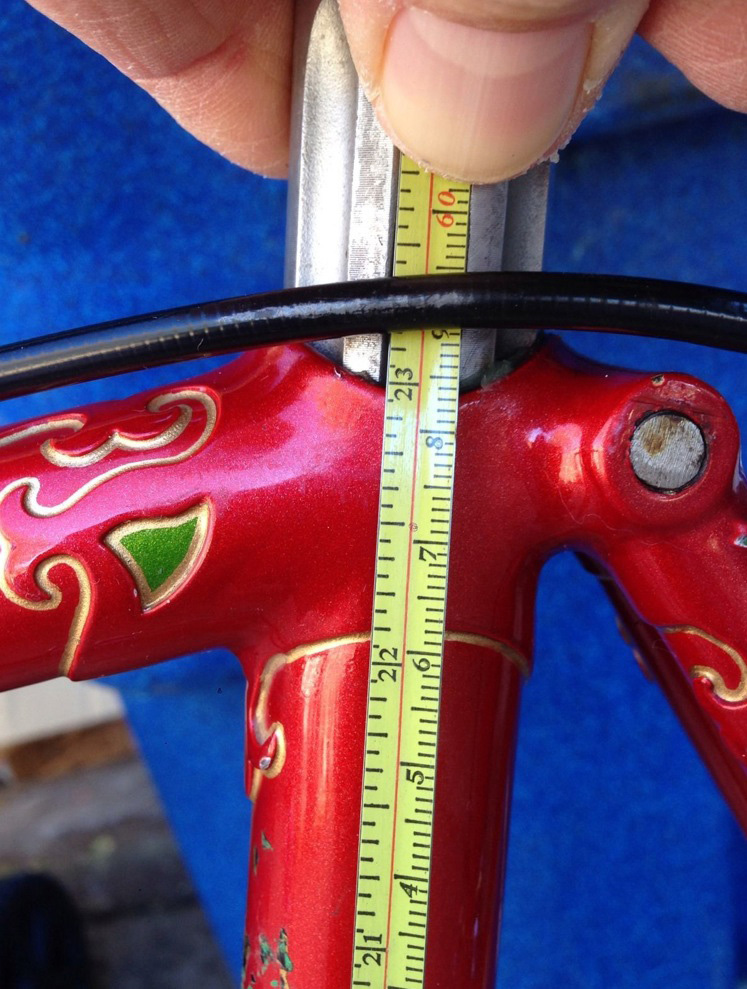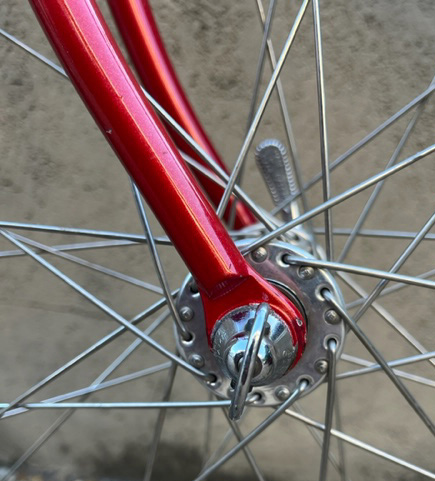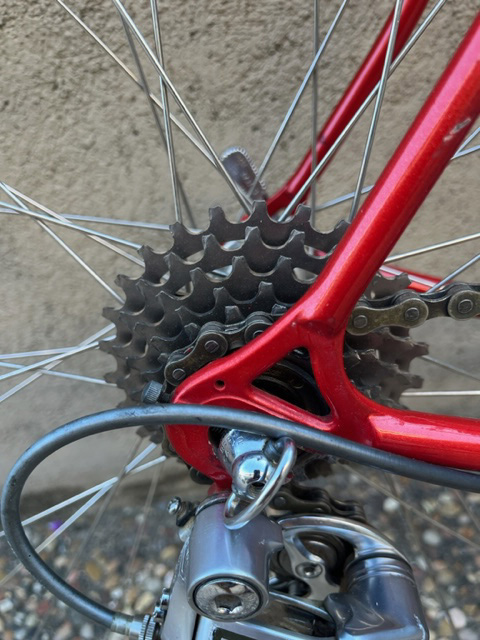A putative MO ii has turned up with accurate lugs, accurate curly stays, and a valid frame number. I excerpt some of the correspondence between the owner and myself (Spring 2023):
Flash: This one is a bit of a puzzle. H26453 is listed in the ledgers as having been first sold 12 april 1957. The size is listed as 22 1/2, which assuming, c-to-c, also fits to what I see in the photos. However, a different model is listed than what I see in the photos. The lugwork I see in the photos is Mag. Opus ii, but the ledger entry is for Vade Mecum. There are also some peculiarities about your frame:
1. the seat cluster is anachronistic, especially the Italianate design whereby the seat stays are integrated with the binder bolt, and the ornamental tang extending down the seat stay from the binder bolt. This sort of seat cluster is not known on any other frame from the 1950s, and I have a photo archive of several thousand such frames. The italianate seat cluster design is known from about 1970 onwards, too new for your frame. Moreover, this kind of seat cluster ornament was not seen on the MO model at all, but only on other models (Italias, for example); the MO model had this kind of ornament on the brake bridge rather than the seat cluster.
2. The brake bridge on your frame is also too new for a 1957 frame. Yours is curved and with re-inforcements extending up-down along the insides of the seat stays. This too was introduced in the early 1970s. 1950s brake bridges were straight, with two 'fingers' wrapped round the seat stays.
The current owner replied as follows: Thank you for your message. I bought the bike a few year ago apparently from the 2nd owner. He indicated it was from the early 1980s. However the frame number did not make sense to me either.
Flash: It has the characteristics of an early 1980s frame. The frame number doesn't fit though. Have you dropped the fork out to check the digits on the steerer? One possibility is that the dropout failed, was replaced, and the wrong digits were re-stamped. But I can hardly imagine which digit would have to have gotten flipped to make it into a 1980s frame number. By then they were stamping H13xxx series numbers.
[The owner kindly sent detailed photos, see below. And answered as follows:] Thank you for looking into my frame. The number on the fork is the same. I was expecting it to be different. The H is triple hit. The frame number does not seem quite right. The closest frame I can find is in the gallery, the mo southend 1981 green. It is quite similar. However the frame number is not as it should be. It looks like a hetchins it feels like a hetchins I'm not sure. Maybe it is not a hetchins and made with original lugs? It definitely does not feel like a bike from the 50s.
Flash: Furthermore, the fork crown is not a proper double-plate. The green 1981 frame you referred to has oval ch.stays, yours has round ones. Ovals replaced round ones in the early 1980s, but the builder could have been using up old stocks for a while into the 1980s. Look also at how the brake cable is routed on the top tube. Yours has single-loops and full-length cable, not stops and loops with bare wire on the top tube. I grant there were many variations of cable routing, but the full-length cable system had different loops than the ones on your frame. I have seen many Hetchins frames with double-loop braze-ons, but never before the sort of single-loop braze-ons on yours.
End of correspondence with the current owner. As you can see, even he has doubts. Below are the photos. I have highlighted the dubious bits in blue. If this is a rogue frame, it is better than most we have seen. The suspicious bits are the fork crown, the seat ornament, the top tube cable guides, and the valid but anachronistic frame number. Also note the FONT: rounded 'three' as well as the open 'four'; Hetchin's stamps used a different font, with flat-topped 'threes' and closed 'fours'. Mouse-over for captions.
|
